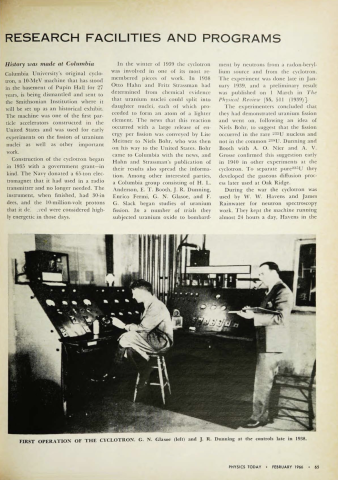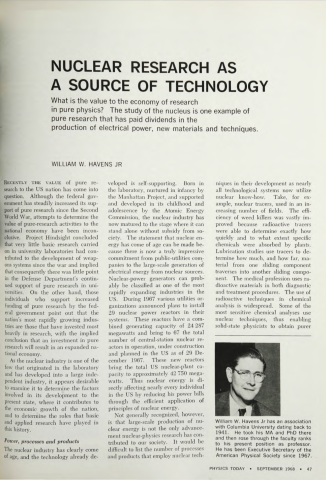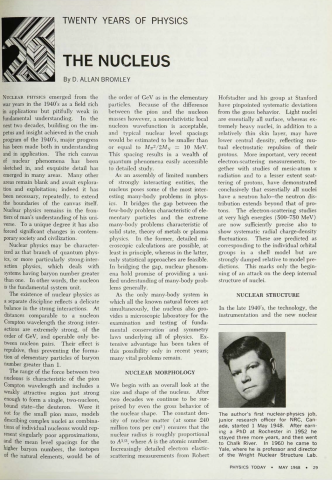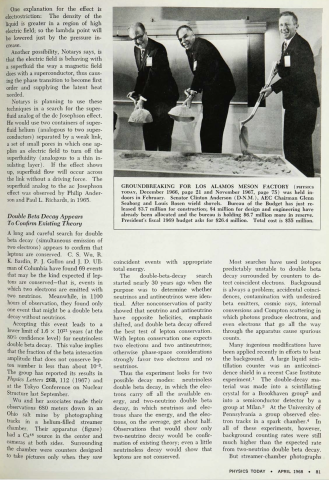The Mössbauer effect

MEETINGS to discuss the theory and applications of the Mossbauer effect can be summarized by the application of a mathematical series. This was pointed out by Dr. Hans Frauenfelder (University of Illinois) in an afterdinner talk at the Third International Conference on the Mossbauer Effect, sponsored by the Advanced Research Projects Agency and held at Cornell University in Ithaca, N. Y. The oddnumbered meetings take place in isolated places, have long sessions, and are free of temptations. The even-numbered meetings take place in exotic places, have short sessions, and provide the conferees with all manner of extracurricular activity. Experimental evidence in support of this theory can be found in Table 1.








